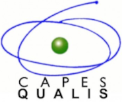Proposals for the Analysis of Art Collections Through Computational Methodologies and Tools
Keywords:
Methodology, Digital humanities, Analysis, Comprehension, Contemporary artAbstract
The methodology presented in this article proposes the use of tools that facilitate the identification, description, classification, visualization and manipulation of large quantities of information as well as the development of new forms of analysis, which offers the possibility of obtaining objective results from concrete consultations. In contrast with the traditional methods of investigation, the use of computational tools implemented in projects regarding digital humanities accomplishes different types of analyses from a common language and a basis of elaborated data which functions for a specific ontology and the necessities of each investigation.
The display models, intuitive and direct, facilitate the identification and comprehension of the relations obtained from the data and characteristics of the works. Their elements, descriptors or authors, among other variables, make it possible to respond to very diverse interests. is versatility is precisely what makes this method very appealing for solving complex problem, and at the same time encourages the participation of multidisciplinary teams that can introduce new perspectives to common problems.













